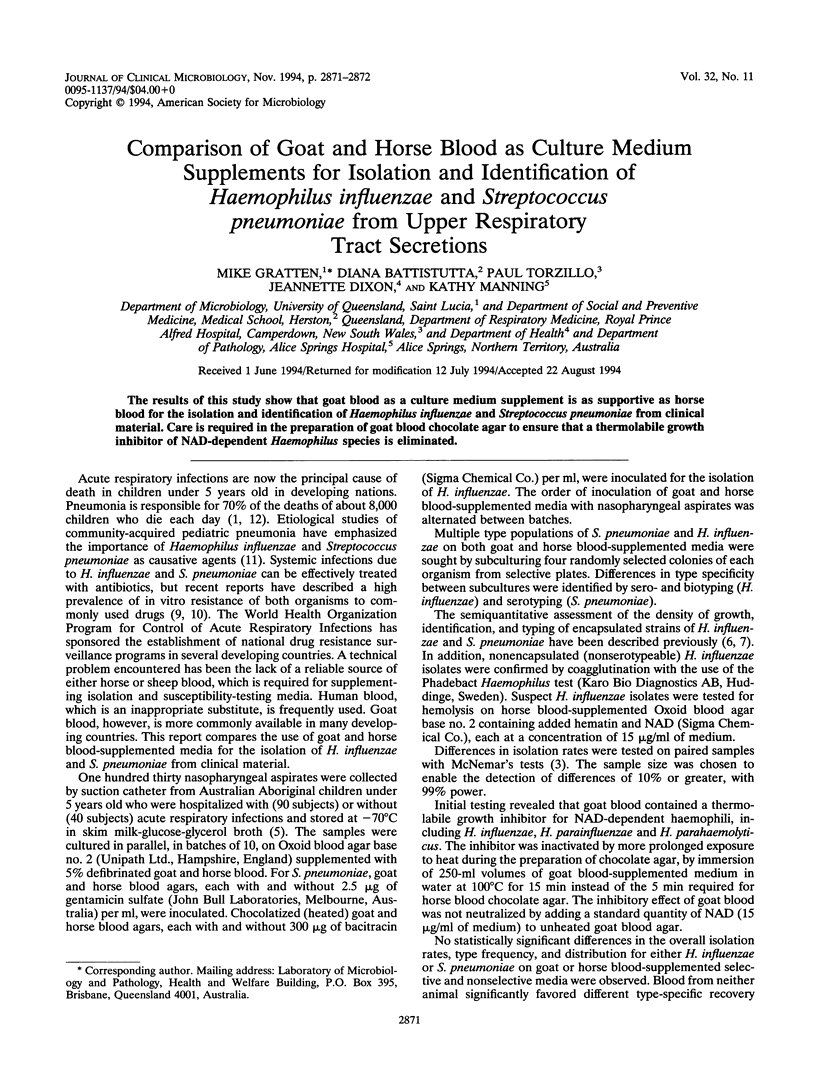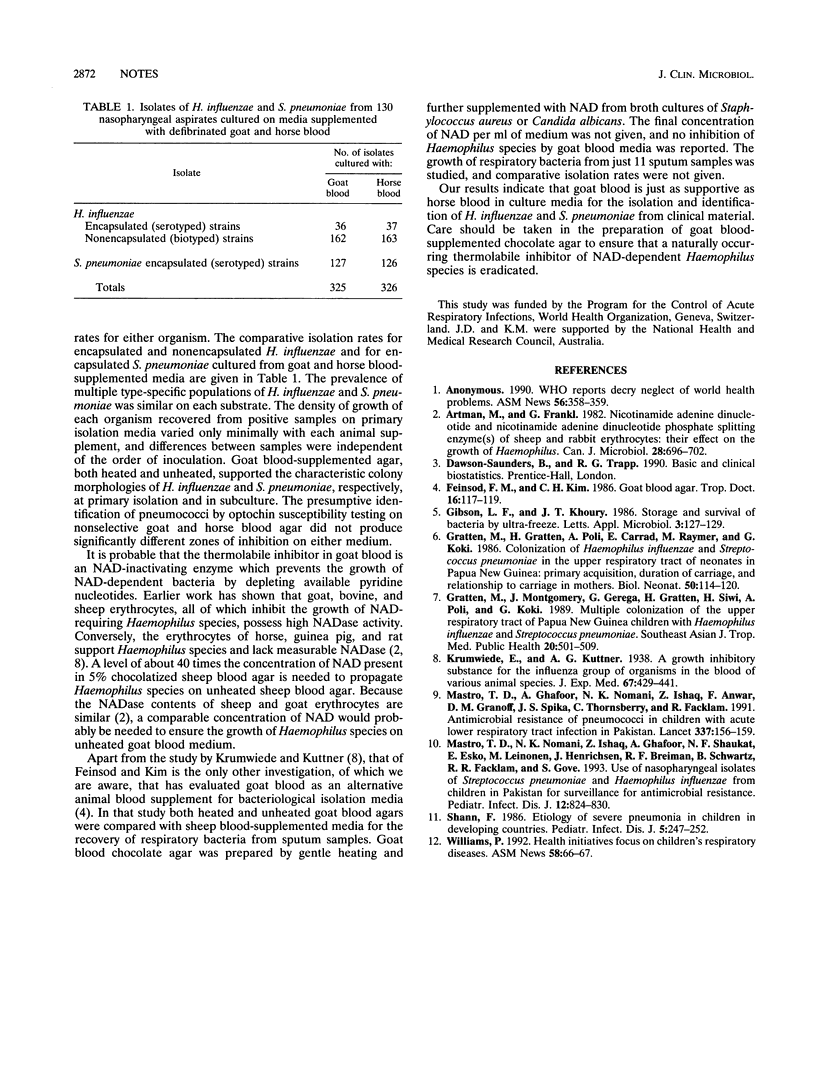Abstract
The results of this study show that goat blood as a culture medium supplement is as supportive as horse blood for the isolation and identification of Haemophilus influenzae and Streptococcus pneumoniae from clinical material. Care is required in the preparation of goat blood chocolate agar to ensure that a thermolabile growth inhibitor of NAD-dependent Haemophilus species is eliminated.
Full text
PDF

Selected References
These references are in PubMed. This may not be the complete list of references from this article.
- Artman M., Frankl G. Nicotinamide adenine dinucleotide and nicotinamide adenine dinucleotide phosphate splitting enzyme(s) of sheep and rabbit erythrocytes: their effect on the growth of Haemophilus. Can J Microbiol. 1982 Jun;28(6):696–702. doi: 10.1139/m82-104. [DOI] [PubMed] [Google Scholar]
- Feinsod F. M., Kim C. H. Goat blood agar. Inexpensive media for culturing common bacterial pathogens. Trop Doct. 1986 Jul;16(3):117–119. doi: 10.1177/004947558601600307. [DOI] [PubMed] [Google Scholar]
- Gratten M., Gratten H., Poli A., Carrad E., Raymer M., Koki G. Colonisation of Haemophilus influenzae and Streptococcus pneumoniae in the upper respiratory tract of neonates in Papua New Guinea: primary acquisition, duration of carriage, and relationship to carriage in mothers. Biol Neonate. 1986;50(2):114–120. doi: 10.1159/000242576. [DOI] [PubMed] [Google Scholar]
- Gratten M., Montgomery J., Gerega G., Gratten H., Siwi H., Poli A., Koki G. Multiple colonization of the upper respiratory tract of Papua New Guinea children with Haemophilus influenzae and Streptococcus pneumoniae. Southeast Asian J Trop Med Public Health. 1989 Dec;20(4):501–509. [PubMed] [Google Scholar]
- Mastro T. D., Ghafoor A., Nomani N. K., Ishaq Z., Anwar F., Granoff D. M., Spika J. S., Thornsberry C., Facklam R. R. Antimicrobial resistance of pneumococci in children with acute lower respiratory tract infection in Pakistan. Lancet. 1991 Jan 19;337(8734):156–159. doi: 10.1016/0140-6736(91)90813-5. [DOI] [PubMed] [Google Scholar]
- Mastro T. D., Nomani N. K., Ishaq Z., Ghafoor A., Shaukat N. F., Esko E., Leinonen M., Henrichsen J., Breiman R. F., Schwartz B. Use of nasopharyngeal isolates of Streptococcus pneumoniae and Haemophilus influenzae from children in Pakistan for surveillance for antimicrobial resistance. Pediatr Infect Dis J. 1993 Oct;12(10):824–830. doi: 10.1097/00006454-199310000-00006. [DOI] [PubMed] [Google Scholar]
- Shann F. Etiology of severe pneumonia in children in developing countries. Pediatr Infect Dis. 1986 Mar-Apr;5(2):247–252. doi: 10.1097/00006454-198603000-00017. [DOI] [PubMed] [Google Scholar]


